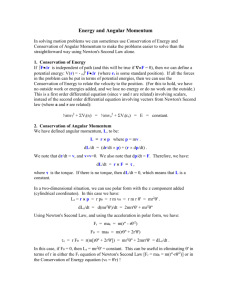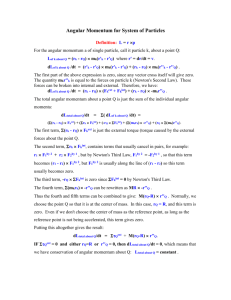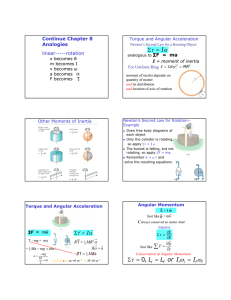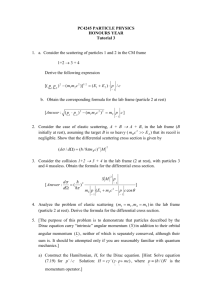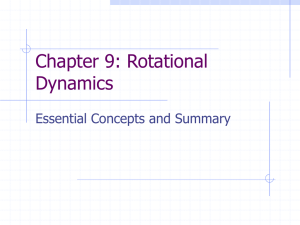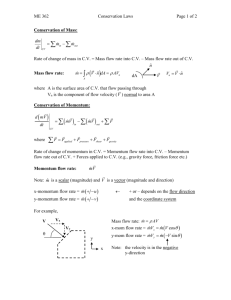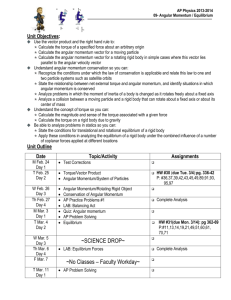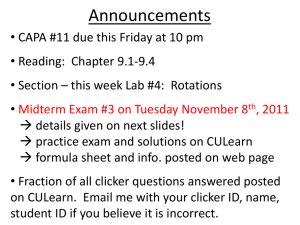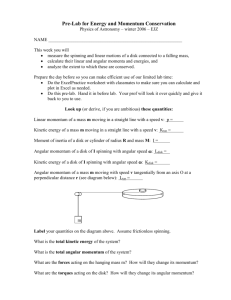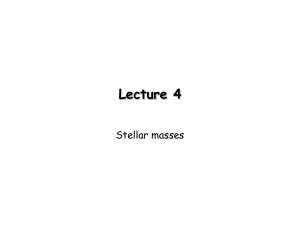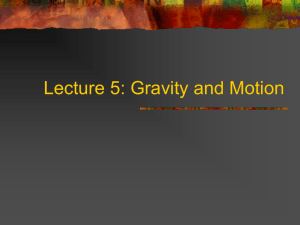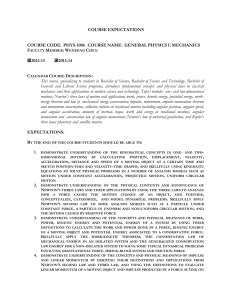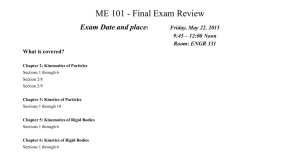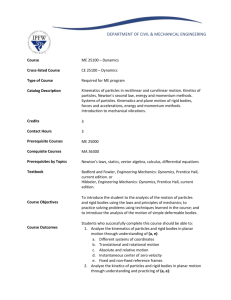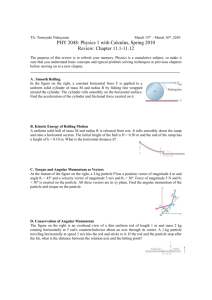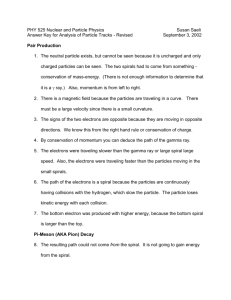Conservation of angular momentum
advertisement
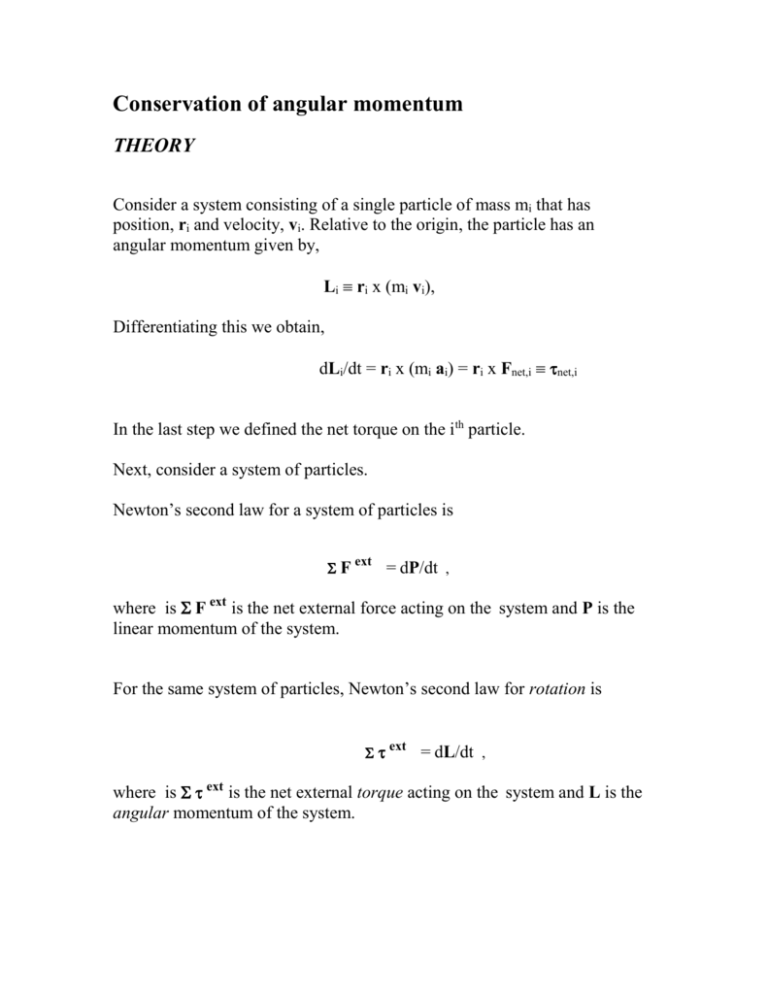
Conservation of angular momentum THEORY Consider a system consisting of a single particle of mass mi that has position, ri and velocity, vi. Relative to the origin, the particle has an angular momentum given by, Li ri x (mi vi), Differentiating this we obtain, dLi/dt = ri x (mi ai) = ri x Fnet,i net,i In the last step we defined the net torque on the ith particle. Next, consider a system of particles. Newton’s second law for a system of particles is F ext = dP/dt , where is F ext is the net external force acting on the system and P is the linear momentum of the system. For the same system of particles, Newton’s second law for rotation is ext = dL/dt , where is ext is the net external torque acting on the system and L is the angular momentum of the system. The conservation of linear momentum occurs if F ext = 0, for then Pi = Pf . The conservation of angular momentum occurs if ext = 0, for then Li = Lf . For a rigid body rotating about a fixed axis of rotation every particle of the rigid body is in rotation with a radius, ri, and with a speed of vi (= ri ). Therefore, Angular momentum of rigid body = L = r x m v = r x m r = I i i i i i i where the sum gives the moment of inertia of the rigid body. For such a rigid body with zero net external torque acting on it, the conservation of angular momentum is written, Ii i = If f . Comments This new conservation law manifests itself in many everyday occurrences, for example, Kepler’s second law of planetary motion, a rotating skater or in a tornado. One uses this principle in problem solving by following the Conservation Law Recipe. EXAMPLES [in class]
